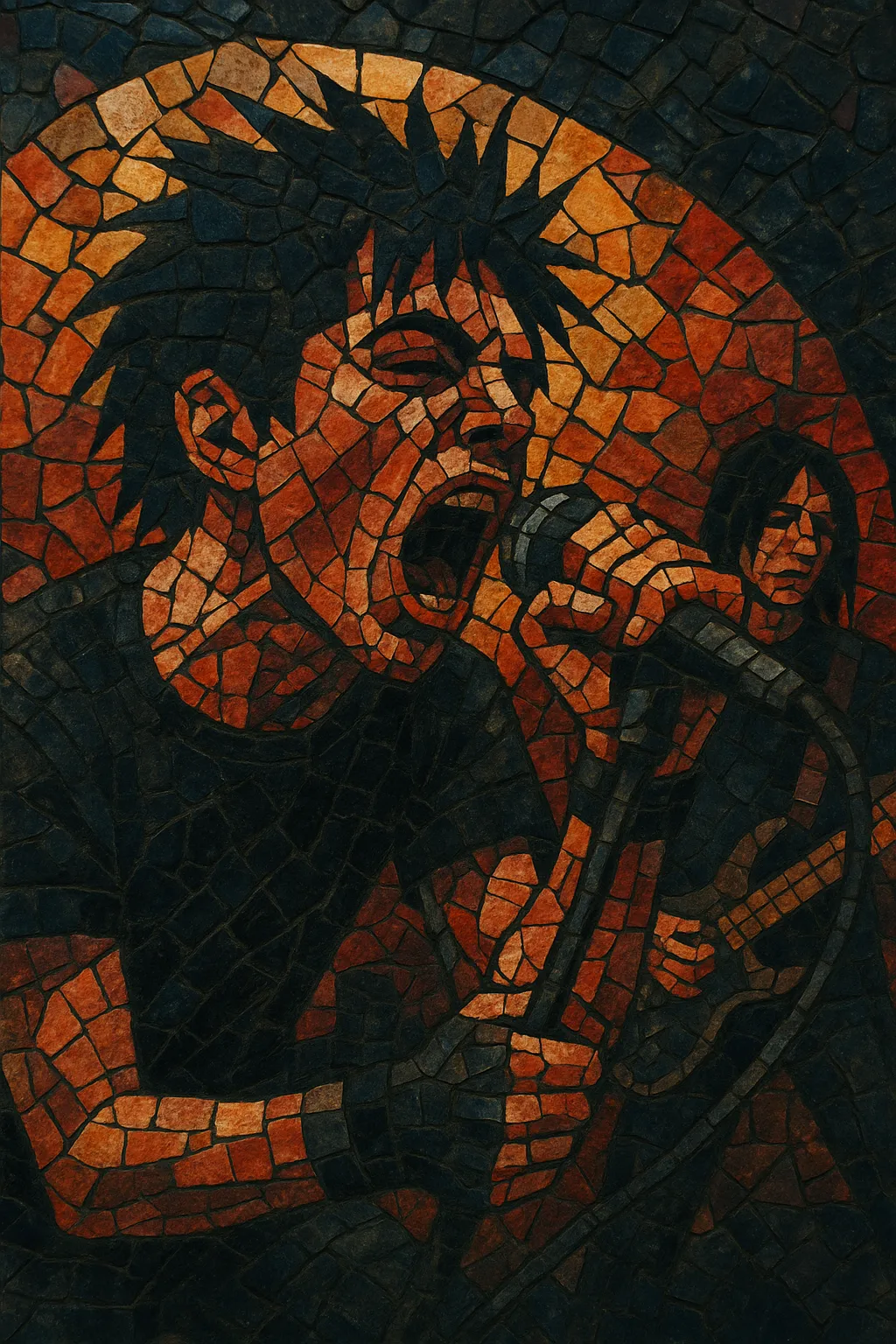
Mall screamo is a mainstream, radio-ready variant of early-2000s screamo and post‑hardcore that fused pop‑punk hooks, emo melodrama, and screamed vocals with glossy, high‑budget production.
Built for Warped Tour stages, MTV2 rotation, and Hot Topic racks, it emphasizes big, cathartic choruses, breakdowns that nod to metalcore, and confessional lyrics about heartbreak, alienation, and coming‑of‑age angst. Typical hallmarks include alternating clean/screamed vocals, octave‑lead guitar riffs in minor keys, fast pop‑punk drum patterns, and tightly edited, sample‑reinforced mixes.
While rooted in 1990s underground screamo, “mall screamo” is distinguished by its accessibility and pop songwriting focus, trading abrasive chaos for earworm melodies and a verse‑pre‑chorus‑chorus economy that made the sound ubiquitous in mid‑2000s North American youth culture.
Mall screamo emerged as a polished, commercial evolution of 1990s screamo (often called “skramz”) and post‑hardcore. As emo and pop‑punk crossed into the mainstream, labels and producers fused the intensity of screaming vocals with pop structures and radio‑friendly hooks. Early scene infrastructure—DIY touring, message boards, and later MySpace—helped codify the sound.
By the mid‑2000s, the sound became a youth‑culture fixture: Warped Tour lineups, MTV2 airplay, and retail presence in mall chains propelled bands to gold records and sold‑out clubs. Victory, Epitaph, Drive‑Thru, and other labels pushed tightly produced albums featuring clean/scream call‑and‑response, half‑time breakdowns, and melodramatic lyric themes. The genre’s visibility popularized the aesthetic of skinny jeans, side‑swept hair, and band tees.
Purists from the hardcore and skramz communities critiqued the style’s pop polish and commercial framing, using “mall screamo” as a pejorative. The term also served to distinguish it from rawer 1990s screamo. Nonetheless, the scene’s craft in songwriting and production set a template for late‑2000s metalcore and post‑hardcore.
As the mid‑2000s wave receded, its DNA carried into electronicore, easycore, and the shimmering, technical post‑hardcore associated with swancore. Its melodic angst and lyrical tropes also fed into emo rap’s crossover. Periodic nostalgia tours and streaming‑era discovery have renewed interest, reframing mall screamo as a distinct, influential branch of the broader emo/post‑hardcore family.







